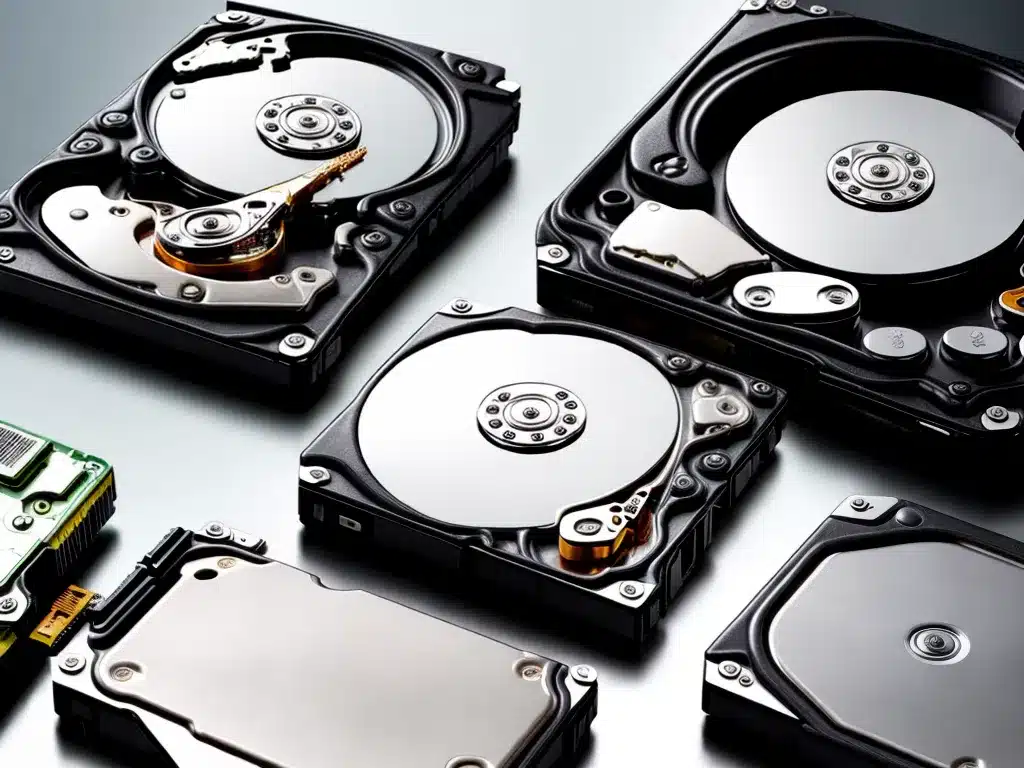
Overview of Seagate Hard Drive Failure
Seagate is one of the largest manufacturers of hard disk drives in the world. Unfortunately, like all hardware, Seagate drives can and do fail from time to time. Hard drive failure can happen for a variety of reasons, including:
-
Mechanical failure – the physical components of the drive fail, such as the read/write heads, spindle motor or printed circuit board. This is the most common cause of failure.
-
Logical failure – the drive’s firmware experiences corruption or the file system structure gets damaged. This prevents access to the data, but the data itself remains intact on the platters.
-
Electronic failure – an electrical component on the drive’s PCB fails, preventing the PCB from working properly.
-
External factor – something outside the drive damages it, such as a power surge, physical damage, water exposure, etc.
Failures can be partial or complete. Complete failure means the drive does not power up or spin up anymore. Partial failure is when the drive powers up but exhibits other issues like not mounting, clicking noises, SMART errors, etc.
Determining the Type of Failure
The first step is to determine the type of failure, as that dictates available recovery options:
Logical Failure
With a logical failure, the drive powers on and spins up, but you cannot access the data. Running the manufacturer’s diagnostic software often detects logical failures. Trying the drive in another computer can also indicate a logical failure. The data remains recoverable through software techniques in these cases.
Mechanical Failure
Mechanical failures present symptoms like the drive not spinning up, clicking noises, scratched platters, or smoke/burnt smells. These indicate a hardware malfunction. Mechanical failures require physical data recovery techniques in a professional lab to extract data.
Electronic Failure
With electronic failures, the drive powers on but the PCB has issues communicating with the computer. This may manifest as the computer not detecting the drive, or the drive dropping in and out of connection intermittently. Electronic failures require PCB repair or replacement to function again.
Software Data Recovery Techniques
If you suspect or confirm a logical failure, several software-based data recovery options exist:
Using Manufacturer Tools
Seagate provides free data recovery software called Seatools that can diagnose problems and recover data from Seagate drives. This should be your first stop when attempting to recover data yourself.
Third Party Recovery Software
If Seatools cannot recover the data, try commercial data recovery programs like Stellar Data Recovery, R-Studio or EaseUs. I’ve personally used all three with good results on logical drive failures. They can rebuild corrupted file systems and extract data even if the drive doesn’t mount.
Using Linux Recovery Tools
Booting from a Linux live CD provides access to built-in Linux utilities like Testdisk and Photorec that can successfully extract data off drives with file system damage or corruption. This is a more advanced but free option.
Physical Data Recovery
If the drive has physical issues, you’ll need to send it to a professional data recovery lab for disassembly and physical recovery techniques like:
-
Drive imaging – The drive platters are imaged bit-for-bit to extract the raw data. Damaged areas are rebuilt from redundant data patterns.
-
Head swaps – The read/write heads are replaced to allow accessing the platters. Donors drives provide matching heads.
-
Platter transplants – If the original platters are too damaged, they transplant the platters from a matching donor drive and rebuild the data.
-
PCB repairs – Failed PCB components are diagnosed and replaced to restore functionality.
These techniques require special tools only available at certified recovery labs. DriveSavers and Ontrack are two reputable labs I recommend. Expect high costs for physical recovery ($$$).
Best Practices to Avoid Data Loss
While drive failures are inevitable, you can take proactive steps to minimize risk:
-
Backup regularly – Both local and cloud backups provide redundancy.
-
Handle drives properly – Avoid physical shocks/drops. Transport in antistatic bags.
-
Monitor drive health – Use S.M.A.R.T. tools to get early warnings of issues.
-
Address problems early – At first signs of failure, recover data before damage worsens.
-
Consider RAID – Redundant RAID arrays can survive individual drive failures.
Key Takeaways
-
Try software recovery yourself first if logical failure. Use Seagate and third party tools.
-
With mechanical/electronic failure, leave recovery to professionals with proper tools.
-
Monitor drive health to detect problems early before massive failure occurs.
-
Have backups as your last line of defense against data loss.
Proper precautions can minimize risk, but drives can still fail unexpectedly. Following these guidelines will ensure the best chance at a successful recovery when faced with a failed Seagate hard drive. Let me know if you have any other questions!












